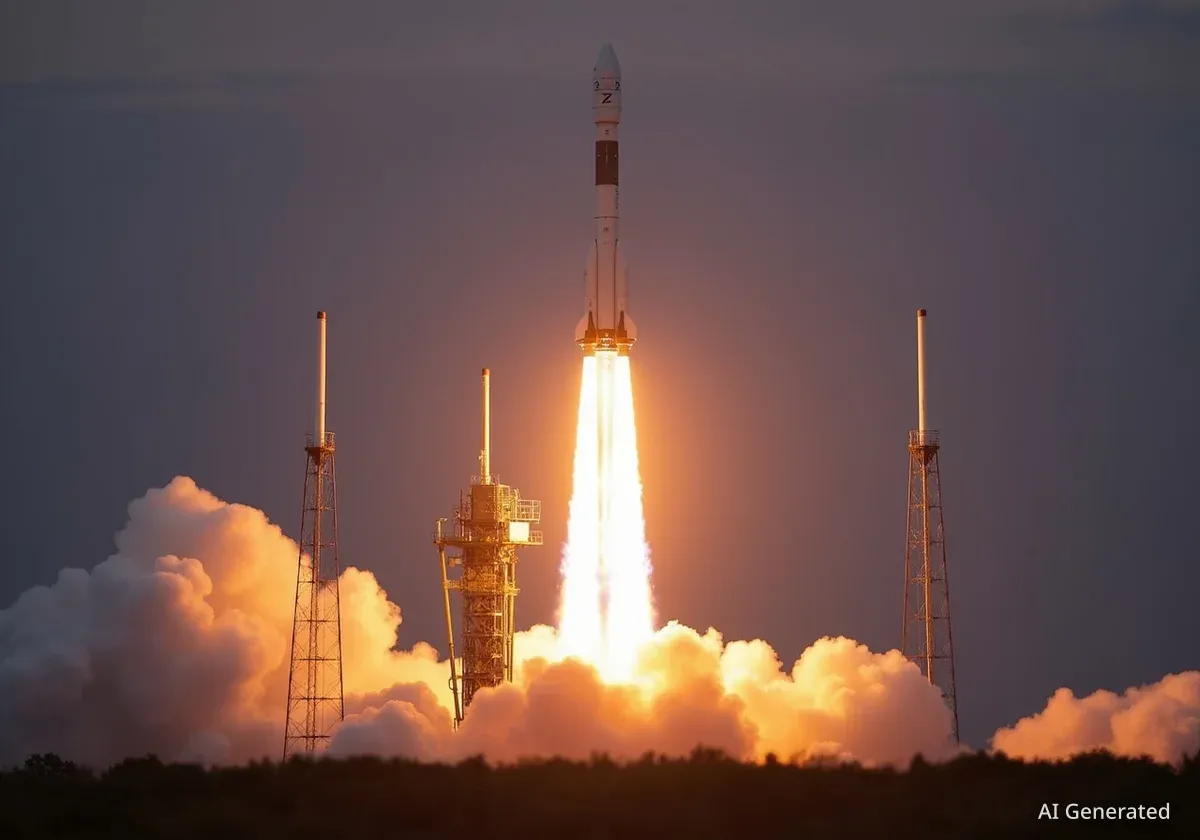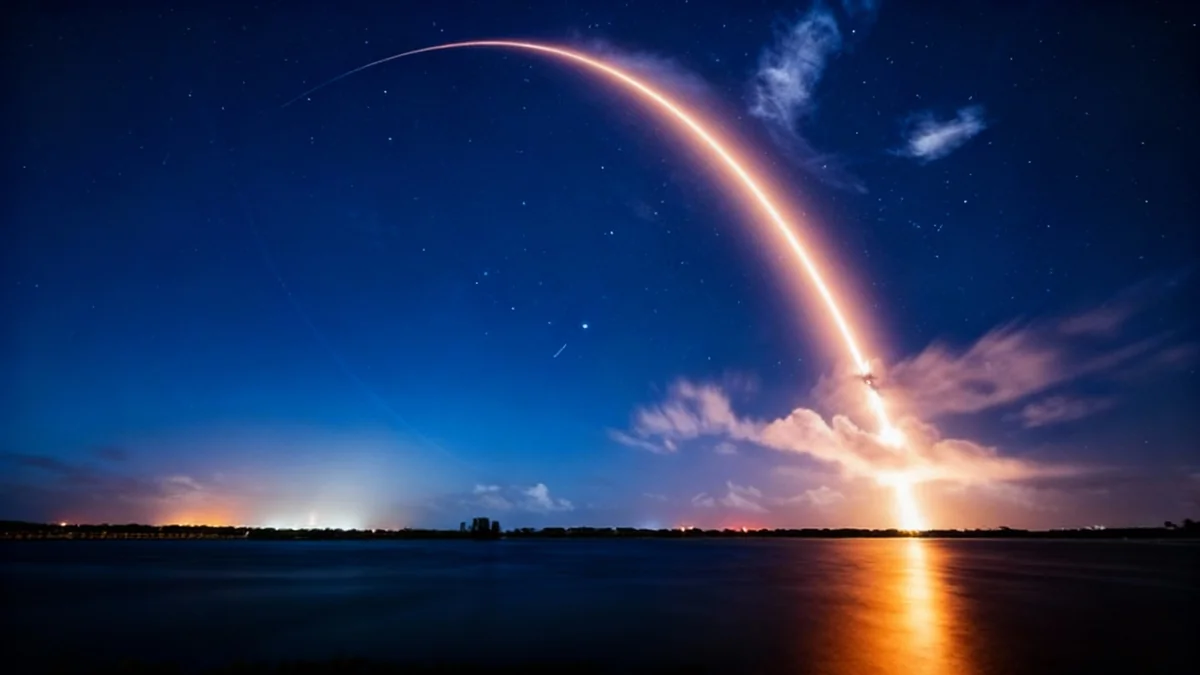A SpaceX Falcon 9 rocket successfully launched from Florida's Kennedy Space Center on Wednesday, carrying a trio of advanced science spacecraft for NASA and the National Oceanic and Atmospheric Administration (NOAA). The missions are headed to a destination one million miles from Earth to study space weather and the sun's influence on our solar system.
The launch occurred at 7:30 a.m. on September 24 from historic Launch Pad 39A, just 17 minutes after sunrise. The rocket's reusable first-stage booster completed its second flight and landed safely on the 'Just Read the Instructions' droneship in the Atlantic Ocean.
Key Takeaways
- A single SpaceX Falcon 9 rocket launched three separate missions: NASA's IMAP, NASA's Carruthers Geocorona Observatory, and NOAA’s SWFO-L1.
- All three spacecraft are traveling to the Earth-Sun Lagrange Point 1 (L1), a stable gravitational point one million miles away.
- The missions will provide critical data on the sun's solar wind, Earth's outer atmosphere, and space weather events that can impact technology.
- The total cost for the development and operation of the three missions exceeds $1.5 billion.
A Multi-Mission Voyage to Lagrange Point 1
The primary destination for this combined launch is the Earth-Sun Lagrange Point 1, commonly known as L1. This is a gravitationally stable point in space located approximately one million miles from Earth in the direction of the sun. From this unique vantage point, spacecraft can maintain a constant position relative to both Earth and the sun, making it an ideal location for solar observation.
By placing these instruments at L1, scientists can monitor incoming solar wind and radiation before it reaches our planet. This provides an early warning system for potentially disruptive space weather events.
NASA's IMAP: Mapping the Edge of the Solar System
The main payload on this flight is NASA’s Interstellar Mapping and Acceleration Probe, or IMAP. The spacecraft will take 108 days to reach its orbit at L1. Its primary objective is to study the heliosphere, the vast protective bubble of particles and magnetic fields generated by our sun.
"It has a lot more capability than previous spacecraft in terms of being able to look at the edge of the heliosphere,” said Michele Cash, IMAP deputy program scientist.
"You can think about the heliosphere like when you’re blowing up a balloon. So the sun is blowing up this bubble -- the heliosphere -- and then outside of that, in interstellar space, there’s intense radiation that we’re protected from by the heliosphere,” Cash explained.
Understanding this shield is critical for future long-duration human spaceflight missions to the Moon and Mars, as some harmful radiation still penetrates it. IMAP will measure these particles to help protect astronauts.
The IMAP spacecraft is equipped with 10 advanced instruments developed through a collaboration of 25 international partners. The total cost for the mission, from development through its initial two-year science operation, is estimated by NASA to be $781.8 million.
Observing Earth and Monitoring Solar Storms
Traveling alongside IMAP are two other important observatories, each with a distinct scientific purpose. One will look back at Earth's atmosphere, while the other will serve as a dedicated space weather sentinel for NOAA.
The Carruthers Geocorona Observatory
The Carruthers Geocorona Observatory, a $97 million NASA mission, will focus on Earth’s exosphere, the outermost layer of our atmosphere. It is named for Dr. George Carruthers, whose research during the Apollo 16 mission first revealed that the exosphere extends much farther than previously believed.
For two years, the observatory will continuously monitor changes in the exosphere to help solve the mystery of its true size and behavior. A student-built instrument called COSMO will also ride along, observing ultraviolet light from the sun.
NOAA’s SWFO-L1 Weather Sentinel
The third spacecraft is the National Oceanic and Atmospheric Administration’s Space Weather Follow On – Lagrange 1 (SWFO-L1). This mission is designed to be a dedicated operational sentinel for monitoring space weather.
Space weather refers to the changing conditions in space, primarily driven by the sun's activity. Eruptions like solar flares and coronal mass ejections send streams of charged particles toward Earth. These events can disrupt GPS satellites, radio communications, and even damage power grids on the ground.
SWFO-L1 will replace aging observatories that are now three decades old. According to Brent Gordon, deputy director at NOAA's Space Weather Prediction Center, the current warning system provides about 20 to 40 minutes of notice before a solar storm hits.
Gordon described the new mission as a significant upgrade. "This will be the first dedicated space weather mission out at the L1 Lagrange point," he said. SWFO-L1 is expected to deliver data to forecasters within 30 minutes, with new images arriving every 15 to 20 minutes.
The mission, which cost $692 million, is scheduled to begin its operations by April 2026. This will provide critical information to industries reliant on GPS, such as aviation and precision agriculture, as well as power grid operators.





